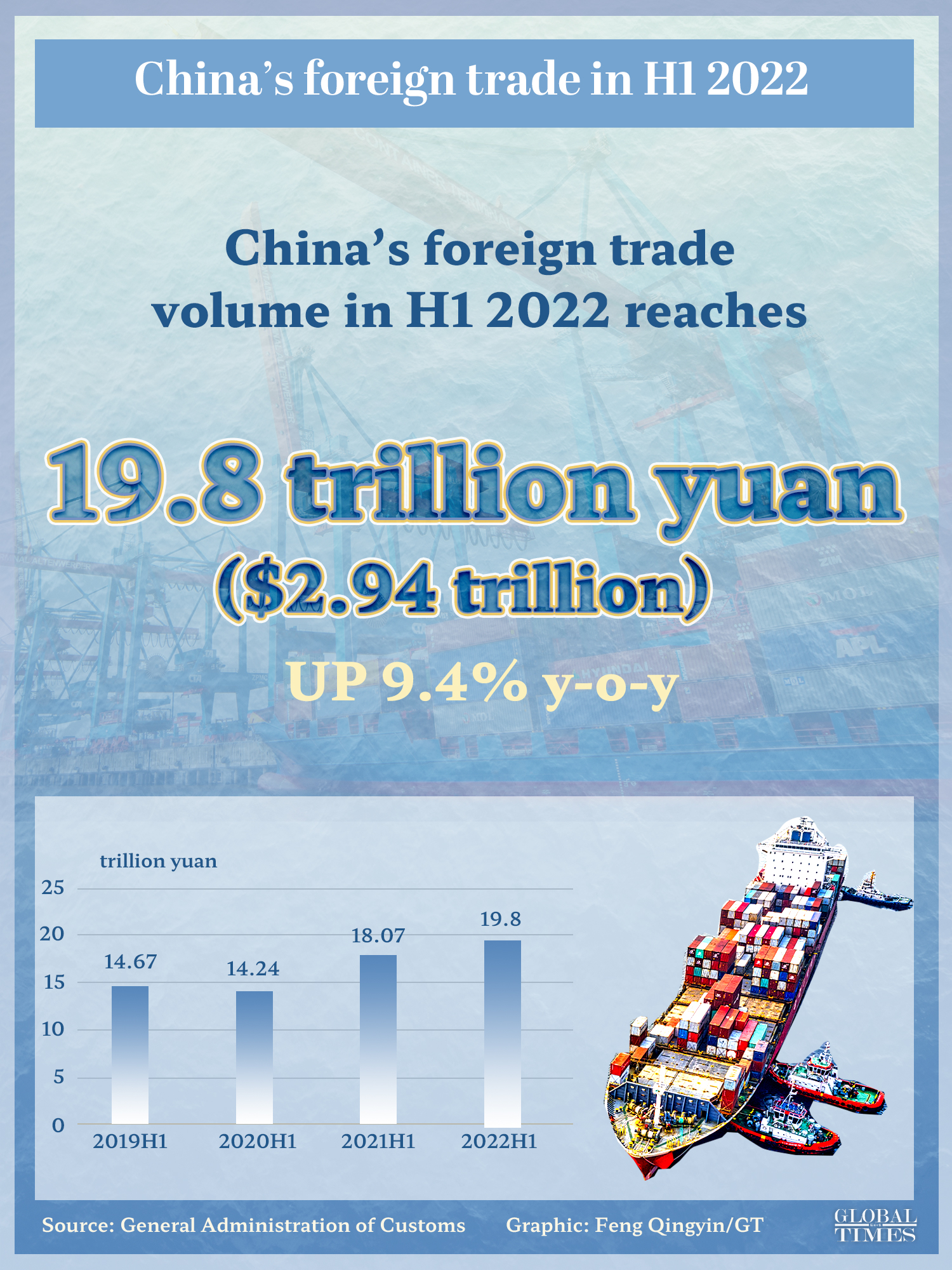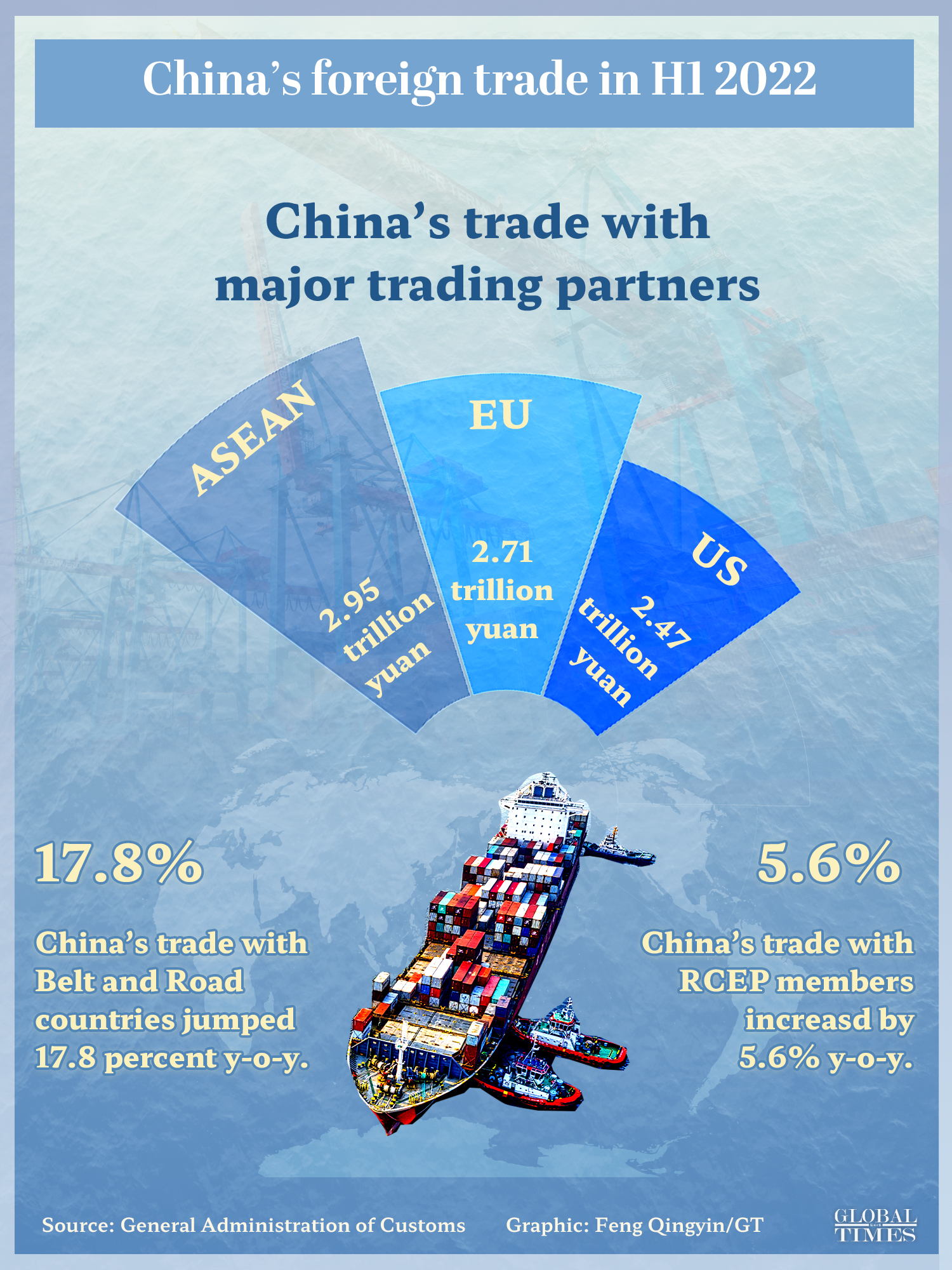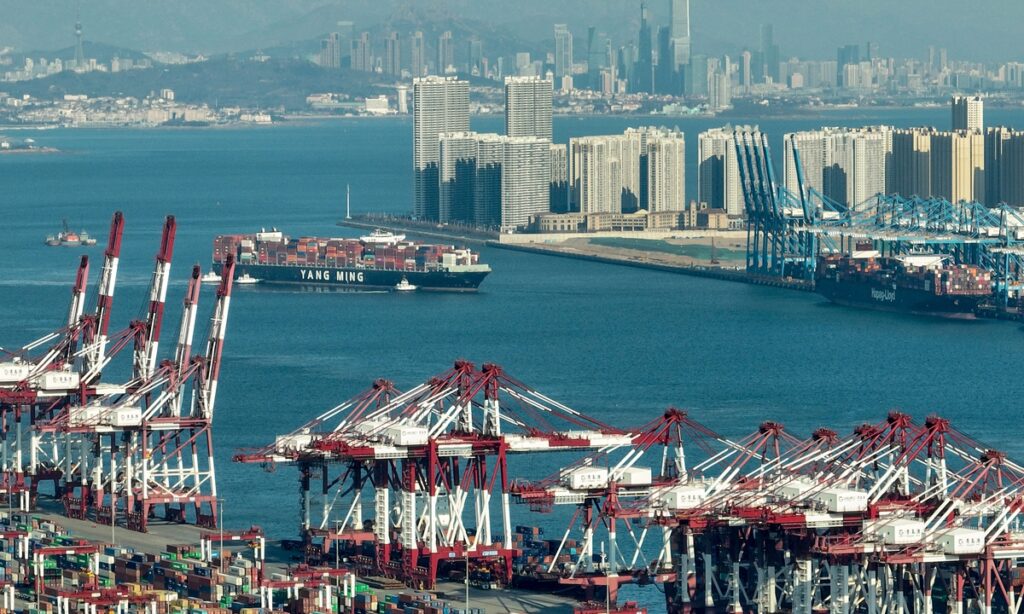China’s foreign trade recovery continued in the first half of 2022, with the country’s total imports and exports expanding 9.4 percent year-on-year, underlying a steady overall economic rebound amid the government’s policy package to stabilize the economy while putting COVID-19 flare-ups under control through targeted measures.
In the first six months of 2022, the country’s total imports and exports grew 9.4 percent on a yearly basis to 19.8 trillion yuan ($2.94 trillion), outpacing the 8.3 percent growth in the January-May period, according to the General Administration of Customs (GAC) on Wednesday.
Over the period, the country’s exports surged 13.2 percent to 11.14 trillion yuan, beating analysts’ forecast of 12 percent. The country’s imports grew 4.8 percent to 8.66 trillion yuan.
In the first half of 2022, China’s trade with its top three trading partners – the ASEAN, the EU, and the US – expanded by 10.6 percent, 7.5 percent, and 11.7 percent from a year ago, respectively. China’s trade with Belt and Road countries jumped 17.8 percent year-on-year.

China’s foreign trade in H1 2022 Graphic: Feng Qingyin/GT
GAC Spokesperson Li Kuiwen said at a press briefing on Wednesday that the country’s foreign trade reported remarkable rebound in May and June, as foreign trade companies, especially those in the Yangtze River Delta region, resume manufacturing and production in an orderly fashion after the country’s COVID-19 resurgence was put under control and as the policies for stabilizing growth are gradually starting to have an effect. The country’s total imports and exports grew 14.3 percent in June.
The remarkable rebound came as the industrial and supply chains linking the Yangtze River Delta region have basically recovered following Shanghai emerging from an extended lockdown, while the export of logged orders during spring has also resumed, Bai Ming, deputy director of the international market research institute at the Chinese Academy of International Trade and Economic Cooperation, told the Global Times.
“The sharp drop in international shipping freight costs over the last several weeks, along with stable Chinese yuan, has also resulted in an increase in overseas orders to Chinese companies,” Bai said.

China’s foreign trade in H1 2022 Graphic: Feng Qingyin/GT
The cost from China to US west coast fell to $7,000 per standard container at the end of June from around $13,000 in early February, ending a ten-month run of $10,000, said a Shanghai-based shipping agent.
A Shenzhen-based air conditioner exporter told the Global Times that more overseas orders arrive after the shipping rates dropped sharply from mid-June. “Shipping freight costs for export orders are borne by overseas customers in most cases. High sea rates have prevented foreign customers from making orders. Now, export businesses began to recover.”
In addition, the authorities have also ratcheted up support to help foreign trade companies navigate challenges amid rising external uncertainties and domestic COVID-19 flare-ups. The State Council, the country’s cabinet, issued a guideline in May to provide more financial and fiscal support for enterprises in the sector, which was followed by detailed policies from 27 government departments.
Looking forward, Bai forecast that the country’s foreign trade is able to extend June’s momentum to achieve double-digit growth in the second half of the year, if developed economies such as the US and the EU managed to decelerate financial tightening and avoid potential economic recession and thereby spark international demand.
China’s trade faces increasing uncertainties entering the second half of the year and the situation remains to be complex and grim, Shu Jueting, a spokesperson of the Ministry of Commerce (MOFCOM) said at a regular press briefing on Thursday.
She cited businesses’ concerns over export prospect, as the global economic growth rate decelerates due to geopolitical tensions and some developed economies’ sizable interest rate hikes.
Despite the challenges, however, the long-term positive fundamentals in trade remain unchanged due to a solid foundation, Shu said. “The country’s multiple supportive policies will further boost the vitality of businesses, while new energy and other sectors, which have shown a sound growth momentum, will further contribute to trade growth in the second half of the year.”
The MOFCOM will work with localities and other government agencies to boost the implementation of policies for stabilizing trade, while continuously making efforts in smoothing foreign trade logistics, strengthening financial support for foreign trade firms, and helping businesses get orders, according to Shu.
Source:- Global Times
A busy Qingdao port in Shandong Province on February 6, 2022. China’s container shipping sector registered steadfast growth despite headwinds from the COVID-19 pandemic and container shortages, indicating the country’s robust foreign trade and economic resilience. Photo: cnsphoto




